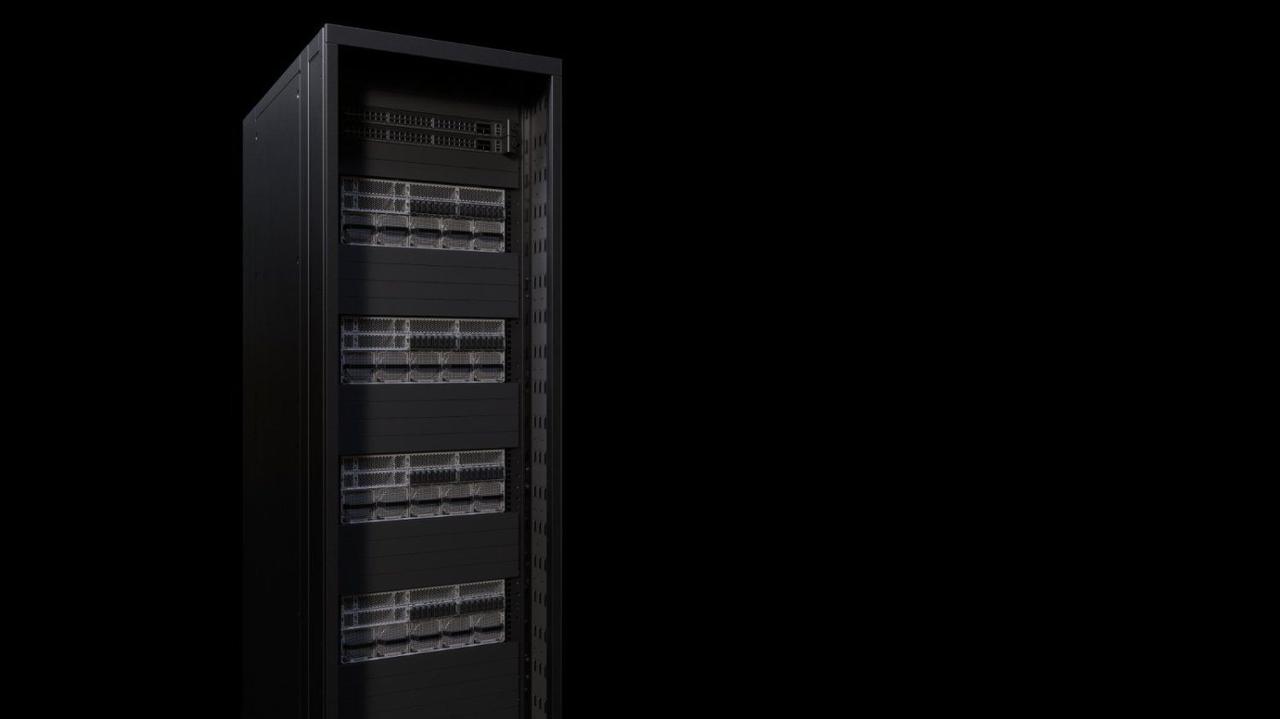NVIDIA Unveils Compact Blackwell GPUs for AI-Powered Workstations: RTX Pro 4000 SFF and Pro 2000
8 Sources
8 Sources
[1]
Nvidia introduces compact Blackwell professional graphics cards -- RTX Pro 4000 SFF and Pro 2000 GPUs arrive at SIGGRAPH 2025
These GPUs are meant for smaller workstations, but they still pack a punch. Nvidia has just launched two more Blackwell GPUs designed for professionals. The RTX Pro 4000 SFF and RTX Pro 2000 have been unveiled at SIGGRAPH 2025. These GPUs round out the company's workstation lineup, slotting in under the top-of-the-line RTX Pro 6000 that was released earlier this year. Aside from their increased performance over prior-gen products, Nvidia says that these GPUs are also tailored for AI acceleration that works across varying workflows in different industries. The RTX Pro 4000 Blackwell SFF is a smaller version of the already available RTX 4000 Blackwell card. The company claims that it offers more than twice the AI performance of the previous-generation RTX A4000 SFF, with improved ray tracing capabilities and 50% more bandwidth -- all while retaining the same 70-watt maximum TDP of the previous card. With 24GB of ECC GDDR7 memory and a claimed 770 AI TOPS of throughput, this GPU could be a great option for professionals looking for more power in a smaller package. Those characteristics make it especially useful for workstations with limited space or tight power and thermal budgets. There's also a new RTX Pro 2000 card with 16GB of ECC GDDR7 memory and 545 AI TOPS of power in the same 70W TGP. Nvidia says this card is built for mainstream design and AI workflows. This GPU is claimed to be around 1.5 times faster than the Nvidia RTX A2000 in 3D modeling, computer-aided design, and rendering. The company also says it's useful for AI image and text generation, boosting its AI performance to make AI-powered workflows faster and more seamless. Unfortunately, we don't have detailed pricing for these GPUs yet -- we expect that information to come from its authorized resellers and system integrators. The company also did not reveal the exact specifications for the RTX Pro 4000 SFF and RTX Pro 2000 on stage. These GPUs are expected to become available later this year, with the RTX Pro 2000 available through PNY and TD Synnex for those looking for individual cards to upgrade their existing units, and from system integrators including Boxx, Dell, HP, and Lenovo, for those looking for complete workstation solutions. The Nvidia RTX Pro 4000 SFF will be available in systems from Nvidia partners like Dell, HP, and Lenovo.
[2]
Nvidia gives its tiniest workstation GPUs a Blackwell boost
70W TDP means the new RTX Pro 4000 SFF and RTX Pro 2000 won't blow power budgets Nvidia's latest Blackwell GPUs are a pair of itty-bitty workstation cards that aim to deliver the highest performance possible for professional visualization and local AI workloads within a 70-watt energy diet. Unveiled at the Siggraph conference in Vancouver, British Columbia, on Monday, the RTX Pro 4000 small form factor (SFF) and RTX Pro 2000 share the same half-high dual-slot cooler design. But despite their similarities, the two cards are very different beasts, with the RTX 4000 SFF packing more than twice the CUDA cores at 8,960 versus the RTX Pro 2000's 4,352. Nvidia says the RTX 4000 Ada SFF is about 1.7x faster in ray tracing and offers 2.5x higher AI performance compared to its previous model. With 280 tensor cores, Nvidia says the chip is capable of delivering 770 teraFLOPS of FP4 performance. While that technically is a 2.51x improvement in floating point math, most of that comes from the move to FP4 rather than architectural gains. When normalized to FP8 the chip is only about 25 percent faster. While floating point performance may not make a huge leap with the diminutive new card, memory bandwidth - a key metric when it comes to local inference - certainly does. With 24GB of GDDR7 memory good for 432GB/s of bandwidth the card should be able to churn out tokens in LLMs like OpenAI's newly released gpt-oss-20b roughly 54 percent faster than Nvidia's last offering. Nvidia suggests the RTX Pro 2000 is best used for professional visualization workloads, however it also promises a sizable performance uplift. The GPU giant says you can expect a 1.6x improvement in 3D modeling, 1.4x higher performance in CAD, and 1.6x faster rendering compared to its Ada Generation predecessor. As for AI performance, the card falls well short of its larger or more power hungry siblings but is no slouch considering its meager 70W TDP. The card boasts up to 545 teraFLOPS of sparse FP4 compute and 280GB/s of memory bandwidth fed by 16GB of GDDR7. Both the RTX Pro 4000 SFF and 2000 will be available starting later this year from PNY and TD SYNNEX and will be offered in OEM systems from BOXX, Dell, HP, and Lenovo. The cards fill out Nvidia's existing line up of Blackwell workstation GPUs announced back at its March GTC conference in March, when the company revealed its 96GB RTX Pro 6000. Also at Siggraph, Nvidia showed off a 2U server platform that can run a pair of the 600W RTX Pro 6000 Server edition cards. Each of the GPUs boasts up to 4 petaFLOPS of sparse FP4 performance. The systems are available now from Cisco, Dell, HPE, Lenovo, and Supermicro, among others. ®
[3]
Mini Footprint, Mighty AI: NVIDIA Blackwell Architecture Powers AI Acceleration in Compact Workstations
NVIDIA desktop GPU family expands with NVIDIA RTX PRO 4000 SFF Edition and RTX PRO 2000 Blackwell GPUs to boost performance for applications across engineering, content creation and 3D visualization. Packing the power of the NVIDIA Blackwell architecture in compact, energy-efficient form factors, the NVIDIA RTX PRO 4000 Blackwell SFF Edition and NVIDIA RTX PRO 2000 Blackwell GPUs are coming soon -- delivering AI acceleration for professional workflows across industries. Applications are becoming increasingly AI accelerated, and more users need AI performance, no matter the size or shape of their workstation. The RTX PRO 4000 SFF and RTX PRO 2000 feature fourth-generation RT Cores and fifth-generation Tensor Cores with lower power in half the size of a traditional GPU. The new GPUs are designed to bring next-generation performance to a range of professional workflows, providing incredible speedups for engineering, design, content creation, AI and 3D visualization. Compared with the previous-generation architecture, the RTX PRO 4000 SFF features up to 2.5x higher AI performance, 1.7x higher ray-tracing performance and 1.5x more bandwidth, creating more efficiency with the same 70-watt max power consumption. Optimized for mainstream design and AI workflows, the RTX PRO 2000 offers up to 1.6x faster 3D modeling, 1.4x faster computer-aided design (CAD) performance and 1.6x quicker rendering speeds compared with the previous generation. CAD and product engineers as well as creatives will benefit from the RTX PRO 2000 GPU's 1.4x boost in image generation and 2.3x leap in text generation, enabling faster iteration, rapid prototyping and seamless collaboration. Businesses Tap NVIDIA RTX PRO for Speedups Businesses across fields including engineering, construction, architecture, media and entertainment, and healthcare are using RTX PRO Blackwell GPUs to instantly accomplish tasks that previously took hours. The Mile High Flood District protects people, property and the environment in the Denver, Colorado, metro area by managing flood risks with regional watershed planning, early warning systems, stream restoration and stormwater control, in collaboration with local governments. "Mile High Flood District runs complex flood simulations, massive 3D visualizations and real-time AI workflows -- and with nearly double the CUDA cores, NVIDIA RTX PRO 2000 Blackwell is a big step up in performance compared with the NVIDIA RTX 2000 Ada Generation GPU," said Jon Villines, innovation manager at Mile High Flood District. "NVIDIA RTX PRO allows us to more easily handle increasingly larger geographic information systems, as well as hydraulic and hydrologic datasets." The Government of Cantabria Geospatial Office is responsible for analyzing and visualizing high-resolution geographic information system data for government and public use. "We tested the NVIDIA RTX PRO 2000 Blackwell and were very impressed with its performance on geospatial workloads with Esri ArcGIS Pro," said Gabriel Ortiz Rico, chief of service of cartography and geographic information systems at the Government of Cantabria. "Fine-tuning of AI models is 2x faster compared with using the RTX 2000 Ada due to the RTX 2000 Blackwell's additional Tensor Cores and GDDR7 memory." Studio Tim Fu (STF) is a London-based design studio specializing in the integration of human creativity and AI with architecture and design. "The RTX PRO 2000 Blackwell powers our UrbanGPT application for real-time text-to-3D urban design, which can be used to generate dynamic city layouts, track vital metrics like program and floor areas, and produce realistic massing distribution across complex urban design scenarios," said Tim Fu, director of STF. "From zoning simulations to large-scale massing studies, this technology accelerates our AI-driven design engine with the stability and responsiveness needed for city-scale planning." New York-based Thornton Tomasetti is a global engineering and design consulting firm integrating engineering, science, technology and forensic analysis to advance performance, resilience and innovation in the built environment and beyond. "At Thornton Tomasetti, we're constantly advancing computational engineering," said Rob Otani, chief technology officer of Thornton Tomasetti. "We benchmarked the RTX PRO 2000 Blackwell on CORE.Matrix -- our in-house, GPU-based Finite Element Analysis solver -- running almost 3x faster than with the RTX 2000 Ada and 27x faster than with a standard CPU. This enabled us to accelerate our structural analysis workflows for more iterative, design-integrated engineering." Glüxkind is a technology company that creates AI-powered smart baby strollers designed to improve safety, convenience and accessibility for parents and their children. "Integrating the latest generation of advanced GPUs like the RTX PRO 2000 enables Glüxkind to push the boundaries of what's possible in AI-powered parenting solutions," said Kevin Huang, CEO of Glüxkind. "The RTX PRO 2000's enhanced AI and graphics performance give us the real-time processing power needed to make our smart strollers safer, more responsive and more convenient for families everywhere." The Software Driving Innovation NVIDIA's software ecosystem enables creators, developers and enterprises to harness the full power of AI and advanced graphics. The NVIDIA AI Enterprise software suite delivers enterprise-grade tools for building, deploying and scaling production AI -- from generative AI and computer vision to speech and natural language solutions -- on virtually any infrastructure. The NVIDIA Cosmos platform offers world foundation models optimized for fast, efficient inference and edge deployment, enabling high-performance AI for robotics, automation and physical AI applications. The Cosmos-Reason1-7B model can run seamlessly on the RTX PRO 4000 SFF, delivering powerful physical AI reasoning capabilities to edge devices, compact workstations and industrial systems. NVIDIA's graphics and visualization tools, including the NVIDIA Omniverse platform, bring generative physical AI and simulation to 3D design teams, facilitating digital twins and visual workflows. In addition, the Blackwell platform builds on NVIDIA's ecosystem of powerful development tools, NVIDIA CUDA-X libraries, over 6 million developers and close to 6,000 applications to scale performance across thousands of GPUs. Availability The NVIDIA RTX PRO 2000 Blackwell and NVIDIA RTX PRO 4000 Blackwell SFF Edition GPUs are coming later this year. The RTX PRO 2000 is expected to be available from PNY and TD SYNNEX, as well as system builders such as BOXX, Dell Technologies, HP and Lenovo. The NVIDIA RTX PRO 4000 Blackwell SFF Edition is expected to be available from global distribution partners and leading manufacturing partners such as Dell Technologies, HP and Lenovo. Watch the NVIDIA Research special address at SIGGRAPH and learn more about how graphics and simulation innovations come together to drive industrial digitalization by joining NVIDIA at the conference, running through Thursday, Aug. 14.
[4]
Blackwell architecture gives Nvidia's new small workstation GPUs the firepower to rival much larger systems at a fraction of the size
Both new GPUs maintain a 70-watt limit, enabling deployment in space-limited systems Nvidia has launched two new SFF (Small Form Factor ready) RTX Pro Servers and workstation GPUs built on its Blackwell architecture that use a single-fan, blower-style, low-profile design. The new RTX Pro 4000 SFF and RTX Pro 2000 slot in beneath the top-end RTX Pro 6000 but are designed to maintain strong performance for professional workloads in smaller, lower-power workstation builds. Both GPUs aim to shift more processing from CPU to GPU, allowing even small-form-factor workstations to handle AI inference, rendering, and simulation faster than before. The RTX Pro 4000 SFF is built with 24GB of ECC GDDR7 memory and delivers up to 770 AI TOPS. Nvidia says it offers more than twice the AI performance of the previous-generation RTX A4000 SFF, and also features improved ray tracing, 50% more memory bandwidth, and has a 70W thermal limit, making it suitable for workstations with limited cooling capacity. The RTX Pro 2000, also limited to 70W, carries 16GB of ECC GDDR7 memory and 545 AI TOPS of throughput. Nvidia claims it is about 1.5 times faster than the RTX A2000 in 3D modeling, CAD, and rendering. The company also points to its usefulness in AI-powered image and text generation, potentially speeding up design and content workflows in smaller studios or engineering teams. These workstation GPUs share the Blackwell architecture benefits found in Nvidia's larger RTX PRO lineup, including support for FP4 precision through fifth-generation Tensor Cores and the second-generation Transformer Engine. This is intended to improve inference performance while keeping power consumption in check. Nvidia has not yet disclosed specific pricing for these models but has indicated that it will make them available through partners such as PNY, TD Synnex, Dell, HP, and Lenovo later this year. Given their position below the RTX Pro 6000, they are expected to cost considerably less while still providing a large performance increase over earlier small-format workstation GPUs. While marketed as an upgrade path for professionals, the actual advantage over the fastest CPU-only small workstation configurations will depend on workload type and software optimization for GPU acceleration. For tasks that already benefit heavily from GPU compute, such as AI inference, large-scale rendering, and simulation, the new RTX Pro 4000 SFF and RTX Pro 2000 could offer strong gains without requiring a larger, more expensive workstation. For CPU-focused applications, the improvements may be less dramatic, but the added GPU capability still expands the performance envelope for small, power-limited systems.
[5]
NVIDIA Launches RTX PRO 4000 SFF and RTX PRO 2000 Blackwell GPUs for AI Workstations
NVIDIA used SIGGRAPH 2025 to introduce two new additions to its professional graphics card range -- both based on the latest Blackwell architecture. The new models, the RTX PRO 4000 Small Form Factor Edition and the RTX PRO 2000, are built to deliver strong AI and rendering performance without consuming a lot of power. Each card runs at just 70 watts, making them good fits for small form factor workstations where heat and energy usage are key concerns. The RTX PRO 4000 SFF Edition is clearly aimed at users who need top-end performance in a compact package. It pushes out up to 770 AI TOPS, meaning it can handle AI-assisted workloads more than twice as fast as the previous RTX A4000. Ray tracing performance has also had a bump -- up to 1.7× faster. Under the hood, it has 8,960 CUDA cores, fifth-generation Tensor Cores, and fourth-generation RT Cores. Memory is handled by 24 GB of ECC GDDR7 on a 192-bit bus, giving a bandwidth of 432 GB/s. Connectivity comes via PCIe 5.0 x8, and the display side is covered by four Mini DisplayPort 2.1b outputs. It also includes dual 9th Gen NVENC encoders and dual 6th Gen NVDEC decoders, useful for professionals working with high-resolution video. The RTX PRO 2000 is a more affordable and slightly less powerful option, but it's still aimed at serious professional workloads. It delivers 545 AI TOPS and comes with 4,352 CUDA cores along with the same generation of Tensor and RT Cores as the 4000 SFF. This card carries 16 GB of ECC GDDR7 on a 128-bit bus, resulting in 288 GB/s of bandwidth. Compared to the RTX A2000, NVIDIA says it's about 1.6× faster in 3D modeling, 1.4× better in CAD, and significantly faster in AI workloads -- text generation is 2.3× quicker, while image generation is 1.4× faster. Like its bigger sibling, it supports PCIe 5.0 x8, has four Mini DisplayPort 2.1b connectors, and comes with one NVENC and one NVDEC engine. Both GPUs are designed for use in space-constrained systems, so they have a short dual-slot layout. Their 70 W power draw means they can be dropped into many existing workstations without needing a bigger power supply. NVIDIA is aiming these cards at industries like architecture, product design, visual effects, and AI research -- fields that often need a balance of compute power, accuracy, and efficiency. FeatureRTX PRO 4000 SFF EditionRTX PRO 2000GPU ArchitectureNVIDIA BlackwellNVIDIA BlackwellCUDA Cores8,9604,352Tensor Cores5th Generation5th GenerationRT Cores4th Generation4th GenerationAI Performance770 AI TOPS545 AI TOPSSingle-Precision (FP32)Not specified17 TFLOPSRT Core PerformanceNot specified52 TFLOPSMemory24 GB ECC GDDR716 GB ECC GDDR7Memory Interface192-bit128-bitMemory Bandwidth432 GB/s288 GB/sSystem InterfacePCIe 5.0 x8PCIe 5.0 x8Display Outputs4 × Mini DisplayPort 2.1b4 × Mini DisplayPort 2.1bMax Displays4 × 3840×2160 @ 165 Hz or 2 × 7680×4320 @ 100 HzUp to 4 simultaneousVideo Engines2 × NVENC (9th Gen), 2 × NVDEC (6th Gen)1 × NVENC (9th Gen), 1 × NVDEC (6th Gen)Power Consumption70 W70 WCoolingActiveActiveForm Factor2.7'' H × 6.6'' L, dual-slot, half-height2.7'' H × 6.6'' L, dual-slotGraphics APIsDirectX 12, Shader Model 6.7, OpenGL 4.6, Vulkan 1.4DirectX 12, Shader Model 6.7, OpenGL 4.6, Vulkan 1.4Compute APIsCUDA 12.8, OpenCL 3.0CUDA 12.8, OpenCL 3.0 Source: NVIDIA Blog
[6]
NVIDIA intros new RTX PRO 'Blackwell' workstation GPUs with RTX PRO 4000 SFF and RTX PRO 2000
TL;DR: NVIDIA launched new RTX PRO Blackwell workstation GPUs, including the compact RTX PRO 4000 SFF and RTX PRO 2000, delivering significant AI, ray tracing, and rendering performance improvements within a 70W power envelope. These SFF-compatible GPUs feature GDDR7 memory and multiple mini DP 2.1 ports for small form factor workstations. NVIDIA has introduced new members of the popular RTX PRO Blackwell workstation GPU family of cards, with new SFF-compatible variants now launched. The company has launched its new RTX PRO 4000 SFF and RTX PRO 2000 workstation GPUs at SIGGRAPH 2025 this week, offering top-tier performance that slots into a SFF system. The new RTX PRO 4000 SFF replaces the RTX A4000 SFF with up to 2.5x more AI performance, 1.7x more ray tracing performance, and 1.5x more bandwidth, all within the same 70W power envelope. NVIDIA's new RTX PRO 4000 SFF packs 24GB of GDDR7 memory with ECC, 4 x mini DP 2.1 display connections, all in a compact form factor under SFF certification, meaning the workstation GPU can be installed and use inside of smaller machines. NVIDIA also launched the new RTX PRO 2000 which is a smaller performance model GPU, with 16GB of GDDR7 memory with ECC, a lower 70W TDP, and 4 x mini DP 2.1 ports. NVIDIA says that the new RTX PRO 2000 has impressive generational upgrades with 1.6x faster 3D modeling, 1.4x faster CAD performance, and 1.6x faster rendering speeds. We don't know the pricing for NVIDIA's new RTX PRO 4000 SFF and RTX PRO 2000 workstation GPUs, but they'll be available for purchase through major system integrators (SIs) like Dell in the coming weeks and months.
[7]
NVIDIA Expands Its RTX PRO 'Blackwell' Workstation GPU Lineup With Two New Variants at SIGGRAPH 2025: RTX PRO 4000 SFF and RTX PRO 2000
NVIDIA has launched newer options for the professional markets by expanding its highly popular RTX PRO Blackwell lineup, now offering SFF-compatible options. Team Green has focused specifically on providing an ecosystem with its workstation GPUs, since apart from professional workloads like rendering, the RTX PRO GPUs have seen massive adoption within the AI segment, particularly in the inference category. Now, to make RTX PRO Blackwell GPUs more accessible, the firm has launched the newer RTX PRO 4000 SFF and the RTX PRO 2000 models at SIGGRAPH 2025, offering not only top-tier performance but a decent form factor as well. Starting with the SFF model, this variant replaces the RTX A4000 SFF from the previous generation, offering "up to 2.5x higher AI performance, 1.7x higher ray-tracing performance and 1.5x more bandwidth", that too with the same power consumption. The GPU features 24 GB GDDR7 memory with ECC, along with 4x mini DP 2.1 connections and a compact form factor under the SFF certification, which means that the workstation GPU can be used in smaller machines. Apart from this, NVIDIA has also launched the RTX PRO 2000, a smaller performance model. It features 16 GB GDDR7 with ECC, a 70W TDP, and 4x mini DP 2.1 ports. According to NVIDIA, the newer variant also has impressive generational upgrades, with "1.6x faster 3D modeling, 1.4x faster computer-aided design (CAD) performance and 1.6x quicker rendering speeds." This positions the RTX PRO 2000 as the company's mainstream offering, competing with the newly announced Radeon PRO W7400. For now, NVIDIA has yet to unveil the pricing of these models, but it seems that they will be available for purchase by major system integrators like Dell.
[8]
Mini Footprint, Mighty AI: NVIDIA Blackwell Architecture Powers AI Acceleration in Compact Workstations
Packing the power of the NVIDIA Blackwell architecture in compact, energy-efficient form factors, the NVIDIA RTX PRO 4000 Blackwell SFF Edition and NVIDIA RTX PRO 2000 Blackwell GPUs are coming soon - delivering AI acceleration for professional workflows across industries. Applications are becoming increasingly AI accelerated, and more users need AI performance, no matter the size or shape of their workstation. [...] This is an abstract of the document. To keep reading, click here and get access to the original version. Attachments Disclaimer Nvidia Corporation published this content on August 11, 2025, and is solely responsible for the information contained herein. Distributed via Public Technologies (PUBT), unedited and unaltered, on August 11, 2025 at 15:13 UTC.
Share
Share
Copy Link
NVIDIA introduces two new compact Blackwell architecture GPUs, the RTX Pro 4000 SFF and RTX Pro 2000, designed for small form factor workstations with enhanced AI acceleration capabilities.
NVIDIA Introduces Compact Blackwell GPUs for AI-Powered Workstations
NVIDIA has unveiled two new compact graphics cards based on its Blackwell architecture at SIGGRAPH 2025: the RTX Pro 4000 Small Form Factor (SFF) Edition and the RTX Pro 2000
1
2
. These GPUs are designed to deliver high-performance AI acceleration and professional visualization capabilities within a constrained 70-watt power envelope, making them ideal for smaller workstations with limited space and power budgets3
.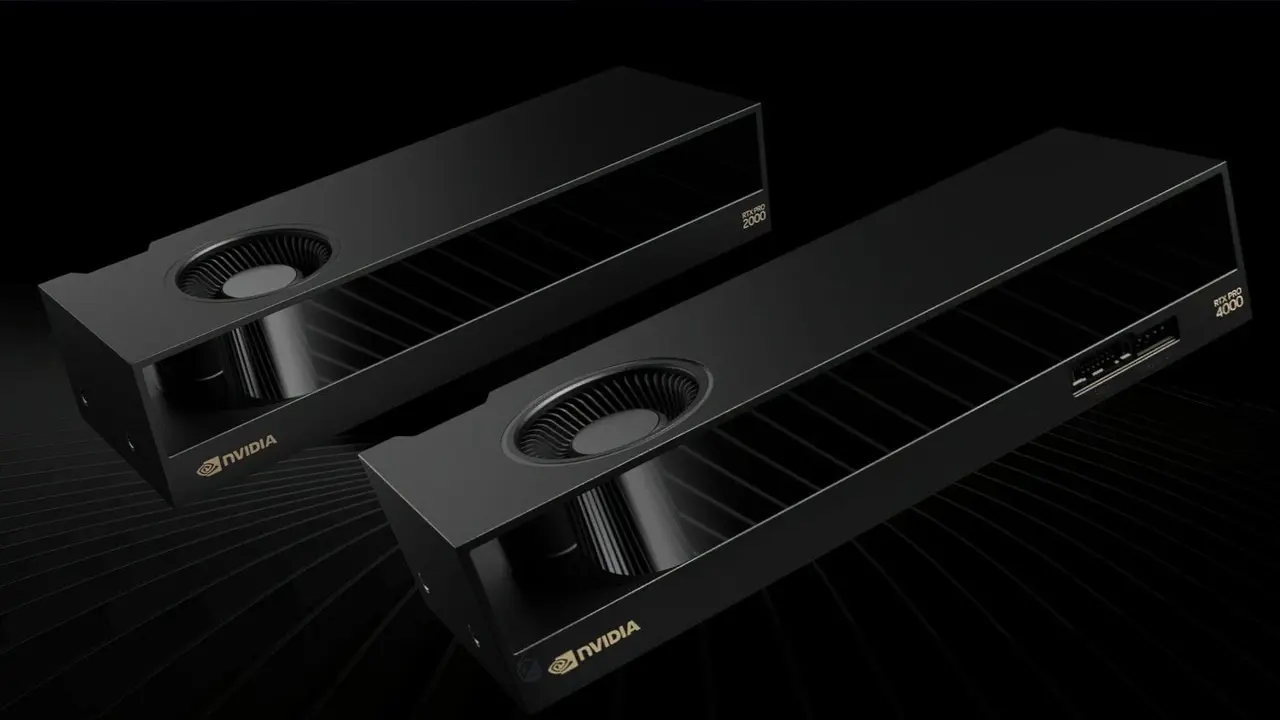
Source: TweakTown
RTX Pro 4000 SFF: Powerful AI Performance in a Compact Package
The RTX Pro 4000 SFF is a smaller version of the existing RTX 4000 Blackwell card, offering impressive specifications:
- 24GB of ECC GDDR7 memory
- 770 AI TOPS (Tensor Operations Per Second)
- 8,960 CUDA cores
- Fifth-generation Tensor Cores and fourth-generation RT Cores
- 432 GB/s memory bandwidth
4
5
NVIDIA claims that this GPU provides more than twice the AI performance of the previous-generation RTX A4000 SFF, along with improved ray tracing capabilities and 50% more bandwidth
1
. The card maintains the same 70-watt maximum TDP as its predecessor, making it suitable for workstations with tight thermal constraints3
.RTX Pro 2000: Mainstream Design and AI Workflows
The RTX Pro 2000 is positioned as a solution for mainstream design and AI workflows, featuring:
- 16GB of ECC GDDR7 memory
- 545 AI TOPS
- 4,352 CUDA cores
- 288 GB/s memory bandwidth
4
5
NVIDIA states that this card is approximately 1.5 times faster than the NVIDIA RTX A2000 in 3D modeling, computer-aided design, and rendering tasks
1
. It also boasts significant improvements in AI-related tasks, with 2.3x faster text generation and 1.4x faster image generation compared to its predecessor5
.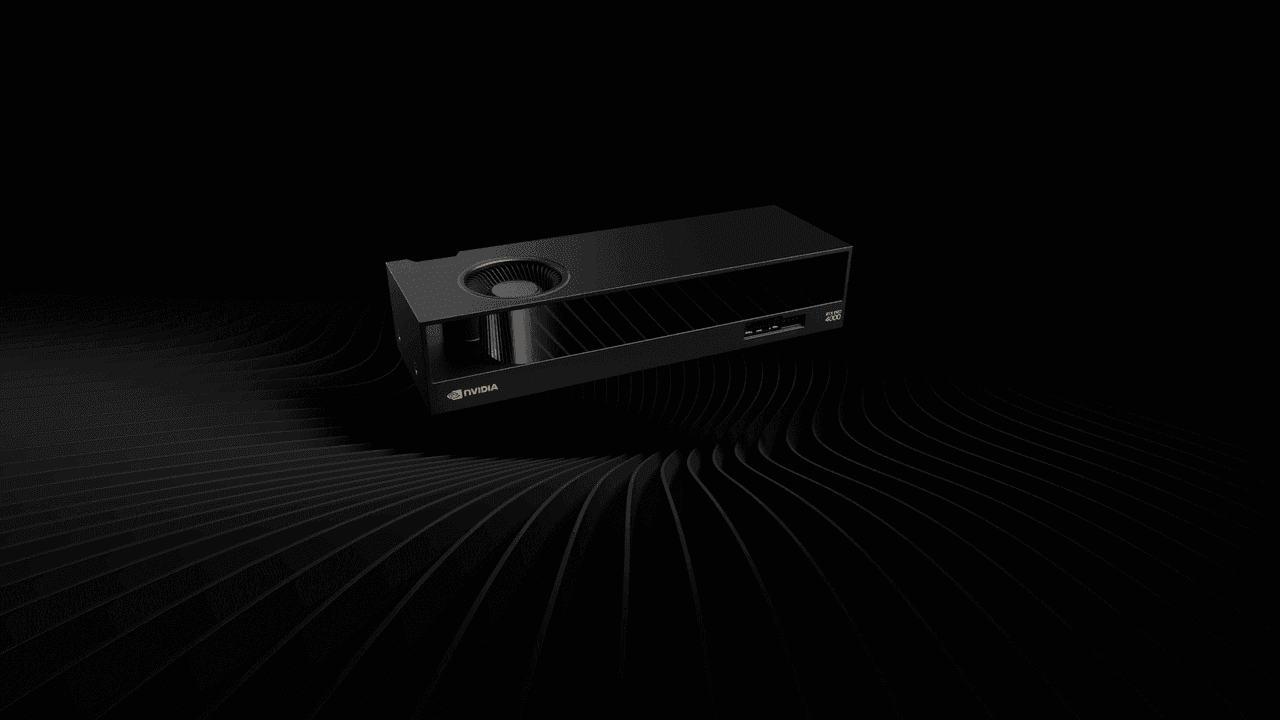
Source: NVIDIA
Related Stories
Enhanced Features and Industry Applications
Both GPUs incorporate NVIDIA's latest technologies, including:
- PCIe 5.0 x8 interface
- Four Mini DisplayPort 2.1b outputs
- Support for multiple high-resolution displays
- Advanced video encoding and decoding capabilities
4
5
These new GPUs are finding applications across various industries:
- The Mile High Flood District in Denver uses the RTX Pro 2000 Blackwell for complex flood simulations and 3D visualizations
3
. - The Government of Cantabria Geospatial Office leverages the RTX Pro 2000 Blackwell for faster fine-tuning of AI models in geospatial workloads
3
. - Studio Tim Fu in London employs the RTX Pro 2000 Blackwell to power their UrbanGPT application for real-time text-to-3D urban design
3
. - Thornton Tomasetti, a global engineering firm, reports that the RTX Pro 2000 Blackwell runs their in-house Finite Element Analysis solver almost 3x faster than the previous generation
3
.
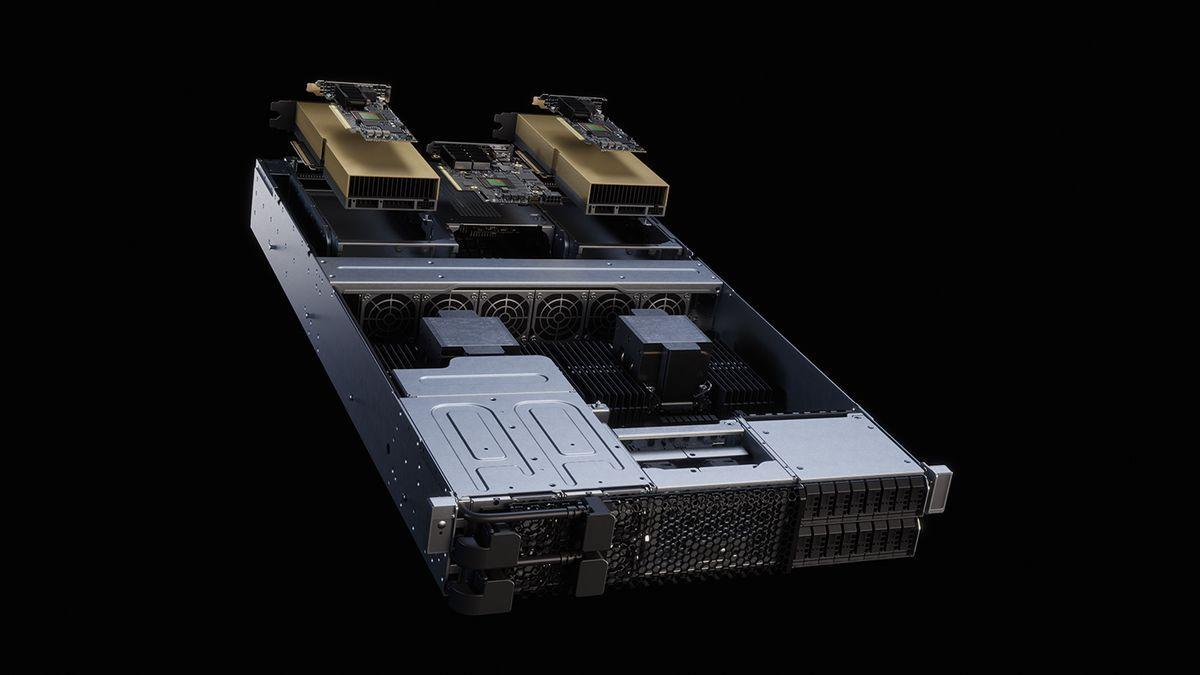
Source: TechRadar
Availability and Pricing
While specific pricing details have not been disclosed, NVIDIA has announced that these GPUs will be available later this year through various channels:
- Individual cards will be sold through PNY and TD Synnex
- Complete workstation solutions will be offered by system integrators including Boxx, Dell, HP, and Lenovo
1
2
The introduction of these compact, high-performance GPUs demonstrates NVIDIA's commitment to bringing AI acceleration capabilities to a wider range of professional workstations, potentially transforming workflows across multiple industries.
References
Summarized by
Navi
[1]
[2]
Related Stories
NVIDIA Unveils Powerful Blackwell RTX PRO GPUs for AI and Graphics Workloads
19 Mar 2025•Technology

NVIDIA Unveils 2U RTX Pro 6000 Blackwell Servers, Accelerating Enterprise AI Adoption
12 Aug 2025•Technology
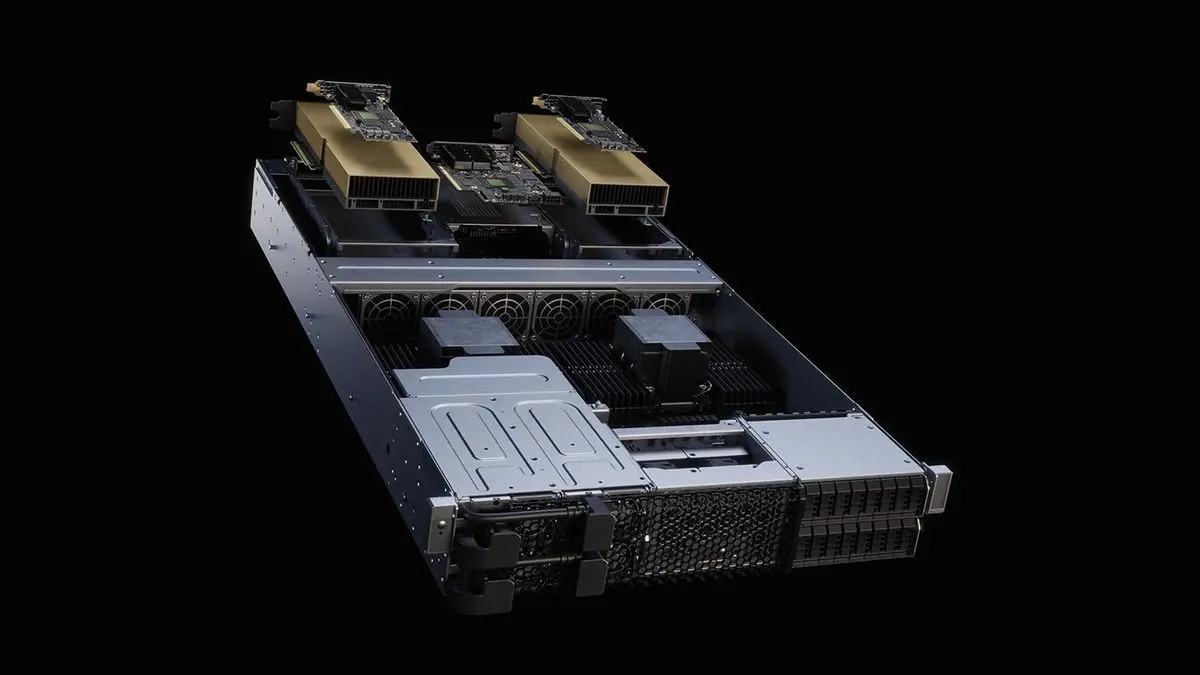
Nvidia Unveils RTX Pro 6000 Blackwell: A Powerhouse GPU for AI and Professional Workloads
19 Mar 2025•Technology
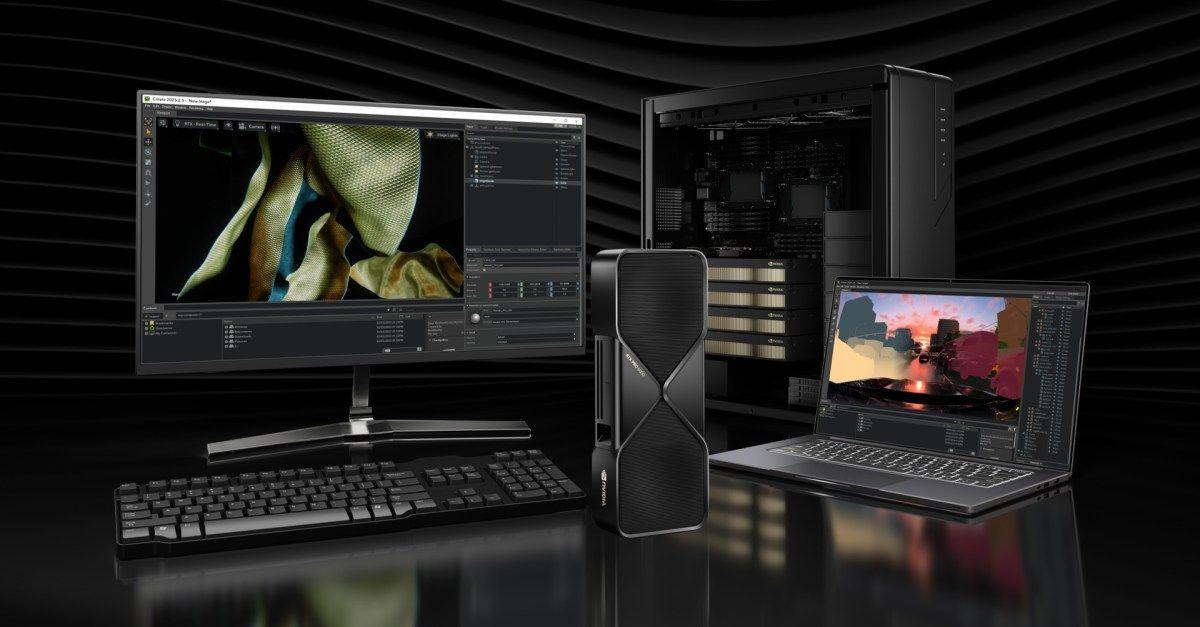
Recent Highlights
1
AI Chatbots Sway Voters More Effectively Than Traditional Political Ads, New Studies Reveal
Science and Research

2
OpenAI declares code red as Google's Gemini 3 gains 200 million users in three months
Technology

3
Trump approves Nvidia H200 chip exports to China with 25% revenue cut, defying Senate concerns
Policy and Regulation

